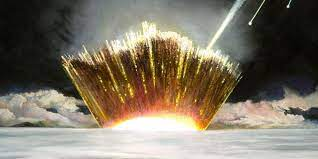On Asteroid Day, a reminder. The ones to worry about are almost never the ones in the alarmist headlines.
Source: CNet
Early in January 2020, a “gigantic” asteroid the size of the Empire State Building speeded “towards Earth.”
At least that’s how it was reported by Sputnik, the news site funded by the Russian government. The reality, as the article stated after the scary headline, was that asteroid 2019 UO would pass us safely on Jan. 10 at a distance of 2,808,194 miles (4,519,351 kilometers). That’s almost 12 times farther away than the moon. I scarcely think of the moon as speeding toward my house every night, let alone something 12 times more distant.
But this is the type of language you find regularly in certain outlets that really love scary asteroid stories. The misleading headlines and stories take advantage of the words scientists use to talk about space objects and the connotations some of those same words have in everyday language.
For example, the phrases “near-earth object” (NEO) and “potentially hazardous asteroid” (PHA) are astronomical terms used to categorize objects with very specific definitions. If an asteroid comes within 4.6 million miles of Earth and has a certain brightness, it makes the list of PHAs. This is really just astronomers’ way of creating a very big catalog of objects worth keeping an eye on. No other evaluation is done of each asteroid to determine just how “potentially hazardous” it is before giving it that designation.
NEOs fall into an even broader category. If you were to leave Earth and travel in the direction of Mars’ orbit around the sun, then stop when you’re about 85% of the way to the red planet, everything between that position and the sun could technically be considered an NEO.
To non-scientists, it can seem strange to call an asteroid “near” when it’s farther away from us than any human has ever traveled. But of course it makes sense when dealing with the mind-blowing scale of the universe, as astronomers do. Same goes for those PHAs. It makes sense to call them that in the context of the hugeness of space, although most PHAs are not actually potential hazards in our lifetimes.
So next time you see a headline screaming about how a “behemoth space rock threatens Earth,” you can check the same sources I do to determine exactly how much you should worry. In fact, I’ll take that specific behemoth as an example.
In the second half of 2019, many outlets began sounding alarms over the approach of asteroid 2006 SF6, which made a close approach by Earth on Nov. 21. It sure sounds like a risky rock heading our way from some of the headlines, so about a week before it was to fly by, I checked the European Space Agency’s Risk Page.
The ESA maintains a list of “all objects for which a non-zero impact probability has been detected.”
When I clicked to get the full risk list and searched the page for both 2006 SF6 and its catalog number, 481394, nothing came up. This potential planet-pummeller didn’t appear to have made the list of the 991 most threatening space objects.
Next I checked the public database of close approaches maintained by the Center for Near Earth Studies at NASA’s Jet Propulsion Laboratory. A search brought 2006 SF6 right up. It is indeed a bit of a behemoth, with an estimated diameter of between 919 feet and 2,690 feet (280 meters and 820 meters).
This skyscraper-size space rock could do some real damage on impact. But its close-approach distance was listed as 11.23 lunar distances. That’s just what it sounds like: more than 11 times farther away than the moon, or about 2.7 million miles (4.3 million kilometers). Sorry, but this behemoth definitely doesn’t threaten Earth.
My point, however, isn’t that you shouldn’t worry about asteroids. As many dinosaur fossils and the rest of the geologic record tell us, the threat of impact by an object from space is very real. But the main threat comes from the objects that aren’t yet in our catalogs.
The most significant impact of the past century happened in 2013 when a meteor impacted the atmosphere over Russia, creating a shock wave that shattered thousands of windows in the city of Chelyabinsk. That space rock hadn’t been previously observed before it exploded in the sky.
The technologies and techniques astronomers use have improved to such a degree that new NEOs are discovered literally every day. This includes some objects actually quite near to Earth, although those tend to be so small they’d probably mostly burn up in the atmosphere if they did impact us, as one did in 2018.
But we still have blind spots, as the 2013 impact demonstrates, so the imperative going forward should be not to freak out over some harmless asteroids, but to devote more resources to continue to scour the sky and complete our catalog so we aren’t caught by surprise again.
Source: CNet

































Leave a Comment
You must be logged in to post a comment.